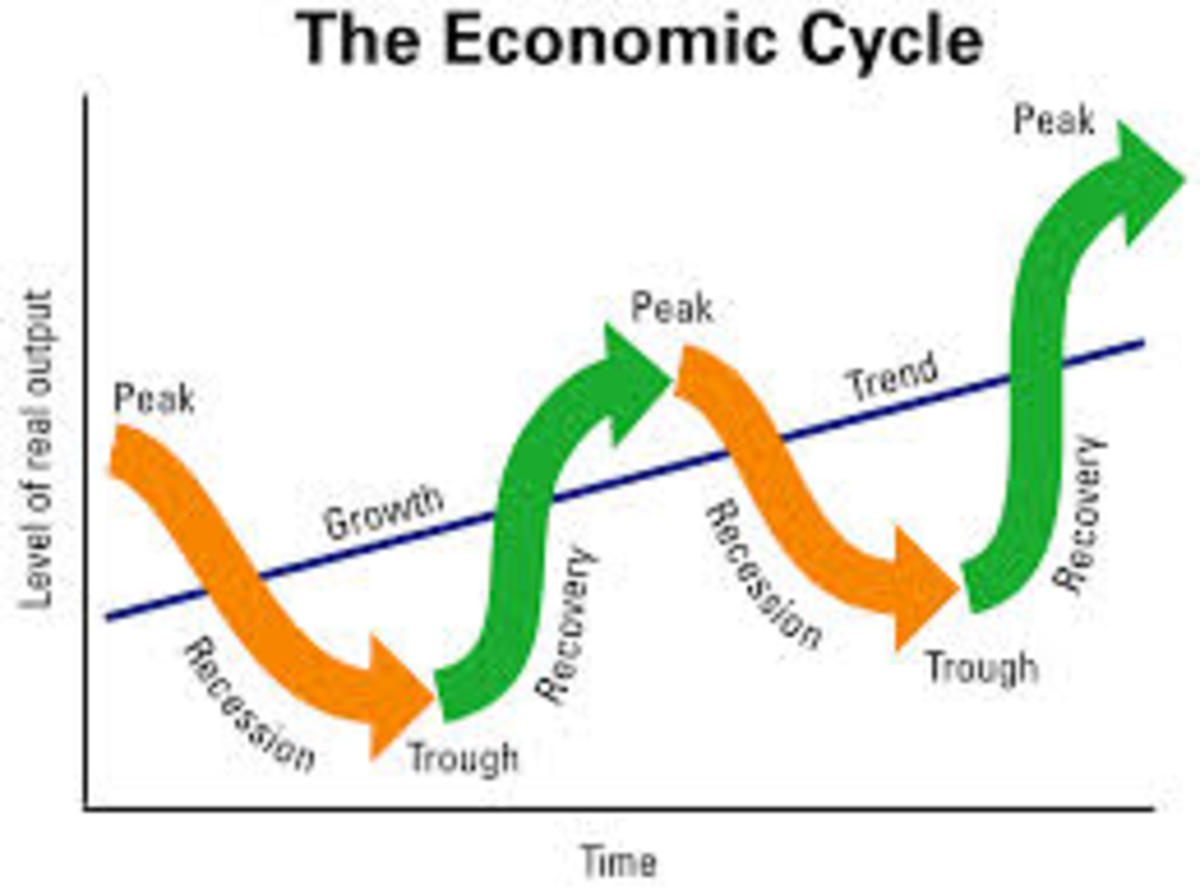Investing in Unstable Markets: Earning Money, ETFs, and Mutual Funds.

Stock Picking, ETFs, and Mutual Funds and not getting screwed by Pay-For-Info sites.
You're here because you want to know how to invest in an unstable market, or you want to know when to jump back in because you've cashed out when you saw your mutual fund tanking. Perhaps you're totally new to investing and just want to know what to do with some spare money each month? Not to worry, let's get started.
I'll keep the technical analysis and all the "jargon" either to a minimum, or exclude it entirely. When one possesses a highly quantitative graduate degree from the University of Chicago the tendency to get highly analytical is there, so I will do my best to keep it to a need-to-know basis! I'll start off with picking individual stocks, then move on to Exchange Traded Funds (ETFs), and lastly mutual funds. Each one of these requires less and less care and concern on the investor's part, mutual funds being pretty much a buy-and-hold and let someone else manage your money style of investing.
First off, a bear market should be like a bargain bin to you for individual stocks. If you've got cash and you're not in, now's the time to do so. Think of it this way: stock prices fluctuate, some more violently than others. Volatility is how you make your money, but it's also how you lose it. Right now the market is at historic lows, and some GREAT stocks out there are at the lowest price they've been in years. I recommend filling a portfolio with winning companies, companies you know of and hear of every day... preferably ones that pay a divided. PepsiCo, Johnsons & Johnson, Procter & Gamble... all of them large companies with their stock prices at very low levels, and they pay dividends which should be re-invested to take advantage of the power of compounding. Dividends are paid out per share every quarter, and they're usually small but they add up fast! A high DIVIDEND YIELD is what to look for. Go to finance.google.com, look up a company and they'll have all sorts of nifty little data entries for you, the Dividend (pay-out per share, if any) and the Dividend Yield should be right there for you, the higher the better.
Also, another important little number is BETA. Beta is easy to understand, but very important. Let's say your stock has a Beta of 1.10. All this means is that if the market moves in either direction then your stock will move 10% more than the market. Let's say the S&P 500 Index goes up 1 point. A stock with a Beta of 1.10 will move up 1.1 points. (Vice versa, they can also move down.) A high Beta means it's a volatile stock, not necessarily good or bad. A Beta of 2.5 or so can move in EITHER DIRECTION, but will move 2.5 times stronger than the overall market. A Beta of 0.5 means that the stock will move in EITHER DIRECTION, but only half as much as the overall market. Get it? I like to pick stocks with stable Betas of around 1.00, or as close as possible to that.
Alpha is where you see growth. Without getting too technical: stocks with a high Alpha mean that they have break-out potential. If there's a stock out there with a double-digit Alpha and a Beta of 1.2 or so... keep an eye on it. If it's a good company with growing revenue and earnings, this may be a great buy. Especially if it has a Dividend and a high Dividend Yield (high being 2.00% or so).
Okay, Exchange Traded Funds. Want to buy into the market, but mutual funds aren't your thing? Well, you can buy ETFs and manage your own mutual fund. For example, the Sector SPDRs (known as spiders, cute yes?) are a great way to go. They are funds of the 9 sectors making up the S&P 500 Index. They are things such as Materials, Energy, Financials, Healthcare, Consumer Staples, etc. www.sectorspdr.com is an excellent resource for information on these sectors, with great charting and a wonderfully helpful administrator named Dan who will be very patient with your e-mail questions.
Now these SPDRs are great in that they pay a dividend, follow that sector, and you can buy them individually. You can look up the tickers, they're XL - then a letter designating the sector. (XLE - Energy, XLF - Financials, etc.) So right now the overall market is down, but if financials are taken out of the equation the market is actually up! So buy some strong ETFs, like Energy and Healthcare, and don't touch Financials with a ten-foot pole. Or even a hundred-foot pole. Just because they pay a hefty dividend does not mean go for them. I won't explain the whole trouble with the big Financials right now, but you've probably heard more than you care to about it. The rest of the market is rather healthy. So either buy these ETFs in the proportions allotted to them on sectorspdr.com or mix and match and buy into them at whatever allocation you want. I go heavy on ones such as XLE (Energy) and such. Buying these SPDRs allows you to get market exposure to sectors you feel are performing well, but without having to expose yourself to the risk of picking individual companies. They're phenomenal.
Okay, mutual funds. You want to invest but looking at your portfolio each month gives you ajida. Not to worry... there are some fabulous mutual fund companies out there. Janus is a great one, Vanguard is a bedrock fund that's been around for decades. morningstar.com does a great job rating these funds, so I won't spend much time on them here. Just look for good track records with LOW or NO front-end loads and a low Expense Ratio.
Google Finance is a great resource. Lots of data, and you can always Google things like P/E Ratio if you don't understand it (Price to Earnings Ratio - low P/E Ratios are good, by the way... a stock with a low Beta, low P/E Ratio, High Alpha, Dividend, and High Earnings... looks like a buy to me.) Morningstar is a great resource for information, they have FREE info on their site, as is www.sectorspdr.com.
Paying for information is a very win-lose ball game. If an add says they can pick you the greatest stocks for your portfolio, ignore it. Totally ignore it. It's Spam. It's too good to be true. If a service says they can analyze stocks and pick them, ignore that as well. By the time they get the data and give it to the big players, those positions are set up for them and you've missed the low buy-in. Some newsletters will even promote penny stocks. The way this works is they pick a stock worth almost nothing, get everyone they know to buy it then promote the Hell out of it. The buying pressure drives the price up nicely, then they pull out with all the returns causing that price to crash back down to its origins, usually leaving most investors in the dust. The web has lots of free information, use it!
Okay, this was a BASIC introductory article on simple investment strategies. Please comment, I'll try to comment back on everything I can. If there's enough interest I will go into detail in another article, or answer frequent questions in more detail. Hopefully this helps, good luck!

- Sector SPDRs
Extremely helpful resource, lots of information on the SPDRs including historical data, Charting, and performance & holdings. - Google Finance
You can look up a company name, or stock ticker and it will show you some basics. - Morningstar
Amazing resource for great articles, good research and reports with their free membership.










